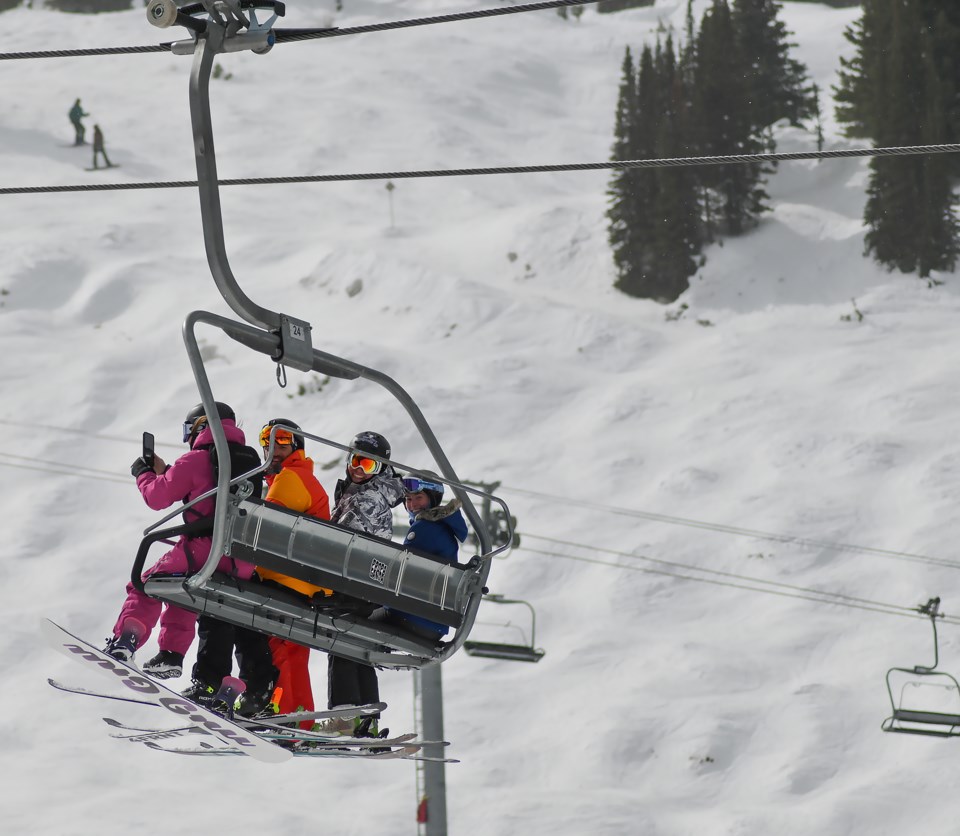La Niña looks to show her face in the Bow Valley this upcoming season, which is good news for powder hounds eager for dreamy, deep powder days.
It’s always hard to predict exactly what the snowfall may look like; however, La Niña, a natural weather pattern, is expected to bring more precipitation and cooler temperatures in the Bow Valley compared to last year’s drier and milder El Niño.
“I would anticipate it to be more snow than last year,” said Alysa Pederson, weather preparedness meteorologist with Environment and Climate Change Canada.
“That’s the best thing to hang your hat on for what the precipitation forecast is for the Rockies this winter.”
The weather event is currently predicted to be a weak La Niña, but Pederson said at this time there’s a 40 per cent chance of it elevating to moderate.
“Whether it’s El Niño or La Niña, the stronger it’s going to be, the more it’s going to have an impact on us,” said Pederson.
However, if it’s weak or moderate, the weather event is expected to bring more snow in comparison to last year.
“Whether it’s normal or above normal, it’s a little bit harder to tell at this point, but it looks to be likely more than we had last year,” Pederson said.
La Niña occurs when strong trade winds push warm ocean water from the west coast of the Americas to the east toward Asia. With the warm water pushed away, cold water rises from the depths of the ocean, called upwelling, which causes the jet stream to be pushed further north resulting in a colder, wetter winter for western Canada.
A La Niña pattern was last seen in the Bow Valley in winter 2022-23, which was followed by the last season’s strong El Niño that produced little precipitation and warm temperatures – and a lot of bad conditions for skiing.
“Last year we were in a strong El Niño and we didn’t have any precipitation in November in a lot of places across the province, and then December was super dry and super hot,” said Pederson.
If a weaker La Niña persists, climate change can take precedence over what happens in the winter months.
“Some of the bigger climate change pieces, the warming climate, might take hold a little bit stronger if we remain in a weak La Niña,” said Pederson.
Pederson noted that the cycle between El Niño and La Niña was typically on a seven-year cycle, but global climate change is “playing a bigger role” in changing the trend.
“It’s one of those challenging things to communicate because it used to be a situation where we flipped back and forth, and it was like a seven-year cycle. It’s not really that anymore,” she said.
Regardless of natural snowfall, many ski resorts such as Mount Norquay Ski Resort are equipped with snow-making machines to open as much terrain as possible.
“We’ve also got extensive snow-making and coverage across the ski hill as well, and so we’re often able to get most of our terrain open quite early and keep it open through this season, regardless of La Niña, El Niño, or any other kind of weather phenomenon,” said Jasper Johnson, Mount Norquay marketing and communications manager.
Last year in November, after receiving significant snow, Norquay put their snow makers to work to open all of their chairlifts before the busy holiday season.
Norquay will typically start making snow toward the end of October, if overnight temperatures allow for it.
“If we get cold nights, -8, -9, -10 [Celsius] or so, then we can start blowing snow and getting our terrain open,” said Johnson.
On Aug. 28, the four local ski resorts – Lake Louise, Sunshine Village, Norquay and Nakiska – posted wintery scenes from their webcams after snow blanketed their slopes, reminding ski and snowboard junkies that the ski season is fast approaching.




